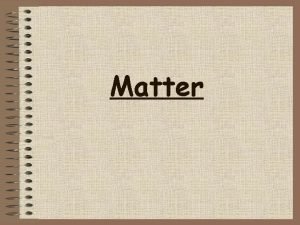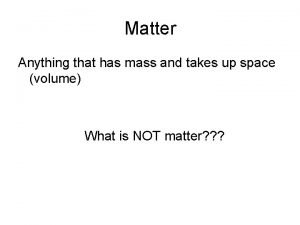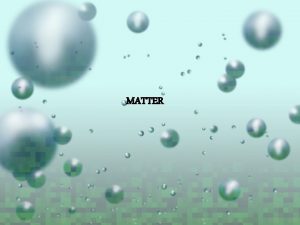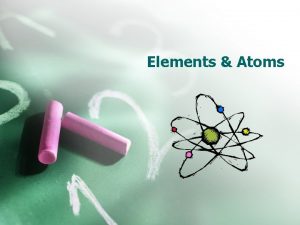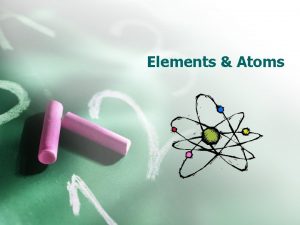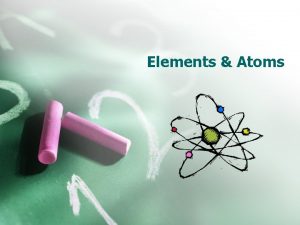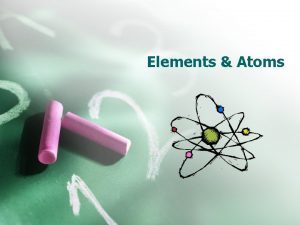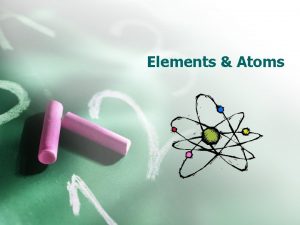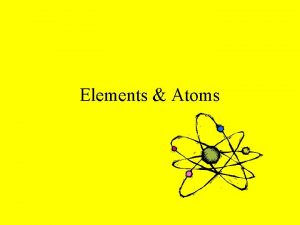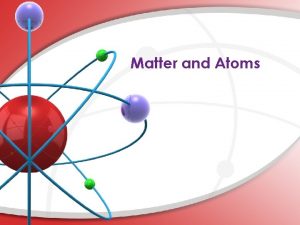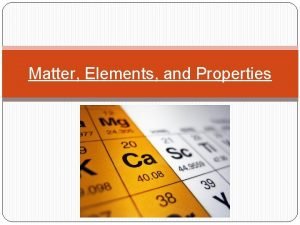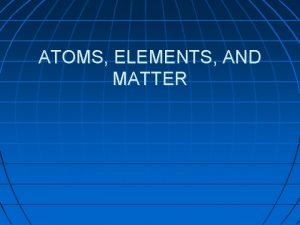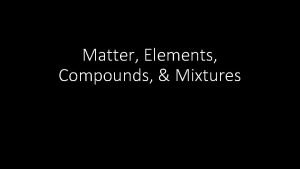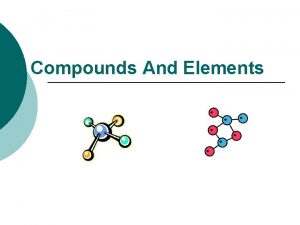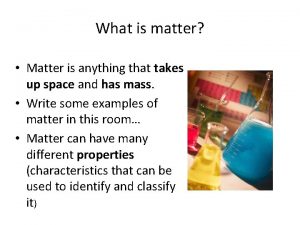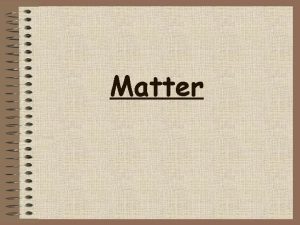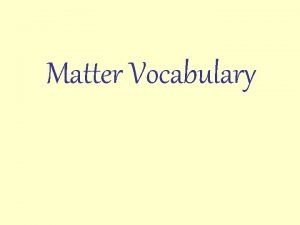Elements Atoms Refresher Matter is anything that takes


















- Slides: 18

Elements & Atoms

Refresher • Matter is anything that takes up space and has mass. • All matter is made of atoms • Atoms are the building blocks of matter, sort of how bricks are the building blocks of houses.

Definitions / Vocabulary • Atom – smallest particle of an element that retains the properties of that element. • Proton – positively charges subatomic particle fount in the nucleus of an atom. Has mass. • Neutron – subatomic particle with no charge found in the nucleus of an atom. Has mass. • Nucleus – dense central portion of an atom, composed of protons and neutrons. • Electron – negatively charges subatomic particle found in an atom, but not in the nucleus. VERY LITTLE MASS. • Isotope – atoms of the same element that have the same atomic number but different atomic masses due to a different number of neutrons

An Atom • An atom has three parts: • Proton = positive • Neutron = no charge • Electron = negative • The proton & neutron are found in the center of the atom, a place called the nucleus. • The electrons orbit the nucleus. Picture from http: //education. jlab. org/qa/atom_model_03. gif

Graphic from http: //education. jlab. org/atomtour/fact 2. html

Periodic Table Atomic Number 8 Symbol Chemical Name Mass Number O Oxygen 16

Example • Nitrogen has an atomic number of 7. How many protons and how many electrons are in a neutral nitrogen atom? • Hint: Atomic number = number of protons = number of electrons

Example • Nitrogen has an atomic number of 7. How many protons and how many electrons are in a neutral nitrogen atom? • Hint: Atomic number = number of protons = number of electrons Answer: Protons = 7 Electrons = 7

Ch. 5 - Atomic Structure http: //www. nisd. net/communicationsarts/pages/chem/ind ex. html II. Masses of Atoms ¨ Mass Number ¨ Isotopes ¨ Relative Atomic Mass ¨ Average Atomic Mass

A. Mass Number mass # = protons + neutrons Ø always a whole number Ø NOT on the Periodic Table! © Addison-Wesley Publishing Company, Inc.

B. Isotopes Definition - Atoms of the same element with different mass numbers. Nuclear symbol: Mass # Atomic # Hyphen notation: carbon-12

B. Isotopes © Addison-Wesley Publishing Company, Inc.

B. Isotopes • Chlorine-37 Ø atomic #: 17 Ø mass #: 37 Ø # of protons: 17 Ø # of electrons: 17 Ø # of neutrons: 20

C. Relative Atomic Mass 12 C atom = 1. 992 × 10 -23 g atomic mass unit (amu) 1 amu = 1/12 the mass of a 12 C atom 1 p = 1. 007276 amu 1 n = 1. 008665 amu 1 e- = 0. 0005486 amu © Addison-Wesley Publishing Company, Inc.

D. Average Atomic Mass • weighted average of all isotopes • on the Periodic Table • round to 2 decimal places Avg. Atomic Mass

D. Average Atomic Mass • EX: Calculate the avg. atomic mass of oxygen if its abundance in nature is 99. 76% 16 O, 0. 04% 17 O, and 0. 20% 18 O. Avg. Atomic Mass 16. 00 amu

D. Average Atomic Mass • EX: Find chlorine’s average atomic mass if approximately 8 of every 10 atoms are chlorine-35 and 2 are chlorine-37. Avg. Atomic Mass 35. 40 amu

Atomic Mass - End
 Matter is anything that has and takes up
Matter is anything that has and takes up Matter is anything that takes up space and has
Matter is anything that takes up space and has Anything that occupies space
Anything that occupies space Matter defintion
Matter defintion Mass vs matter
Mass vs matter Anything that has mass and take up space
Anything that has mass and take up space 7 diatomic elements
7 diatomic elements Matter is anything that
Matter is anything that Matter is anything that has mass and
Matter is anything that has mass and Anything that has mass and volume
Anything that has mass and volume Anthing that takes up space and has mass is called?
Anthing that takes up space and has mass is called? Regents periodic table
Regents periodic table Phân độ lown ngoại tâm thu
Phân độ lown ngoại tâm thu Block nhĩ thất độ 3
Block nhĩ thất độ 3 Thể thơ truyền thống
Thể thơ truyền thống Thơ thất ngôn tứ tuyệt đường luật
Thơ thất ngôn tứ tuyệt đường luật Chiến lược kinh doanh quốc tế của walmart
Chiến lược kinh doanh quốc tế của walmart Tìm độ lớn thật của tam giác abc
Tìm độ lớn thật của tam giác abc Hãy nói thật ít để làm được nhiều
Hãy nói thật ít để làm được nhiều





